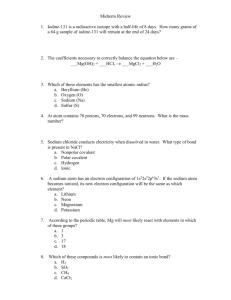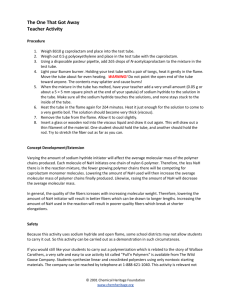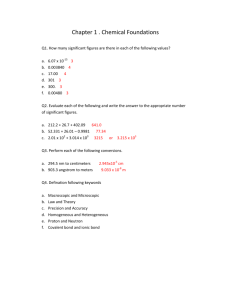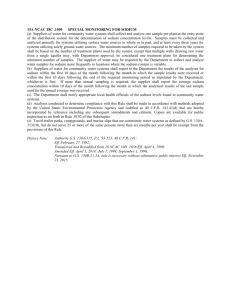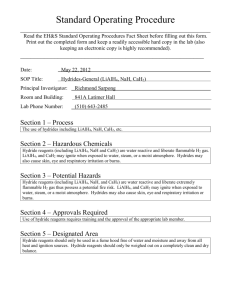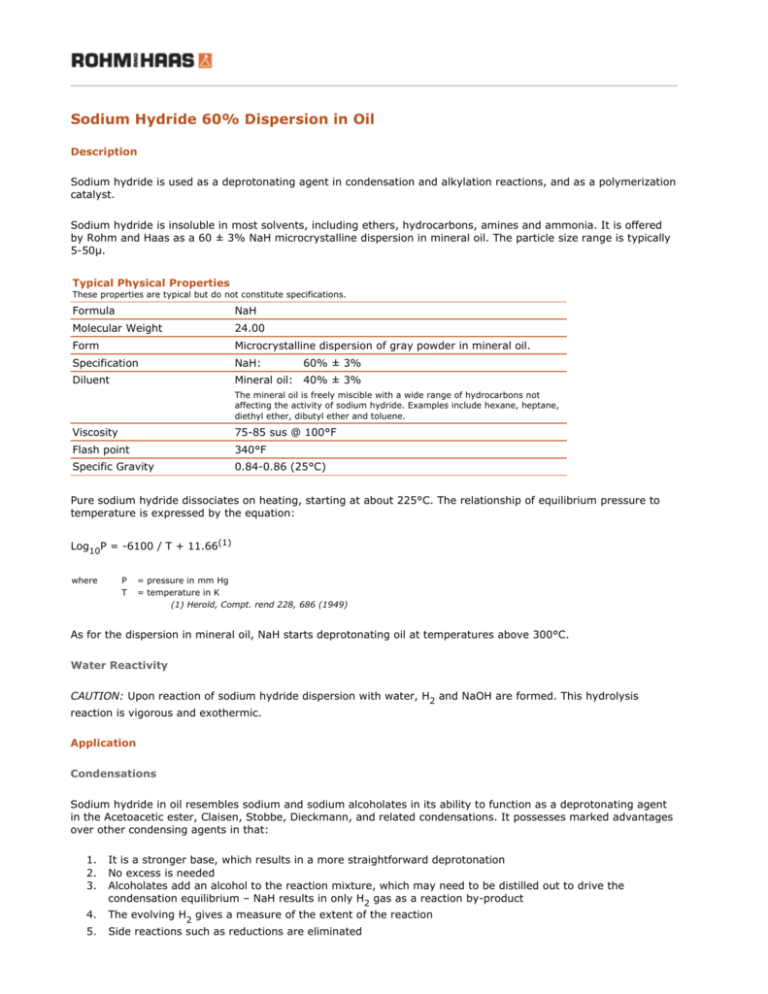
Sodium Hydride 60% Dispersion in Oil
Description
Sodium hydride is used as a deprotonating agent in condensation and alkylation reactions, and as a polymerization
catalyst.
Sodium hydride is insoluble in most solvents, including ethers, hydrocarbons, amines and ammonia. It is offered
by Rohm and Haas as a 60 ± 3% NaH microcrystalline dispersion in mineral oil. The particle size range is typically
5-50µ.
Typical Physical Properties
These properties are typical but do not constitute specifications.
Formula
NaH
Molecular Weight
24.00
Form
Microcrystalline dispersion of gray powder in mineral oil.
Specification
NaH:
Diluent
Mineral oil: 40% ± 3%
60% ± 3%
The mineral oil is freely miscible with a wide range of hydrocarbons not
affecting the activity of sodium hydride. Examples include hexane, heptane,
diethyl ether, dibutyl ether and toluene.
Viscosity
75-85 sus @ 100°F
Flash point
340°F
Specific Gravity
0.84-0.86 (25°C)
Pure sodium hydride dissociates on heating, starting at about 225°C. The relationship of equilibrium pressure to
temperature is expressed by the equation:
Log10P = -6100 / T + 11.66(1)
where
P
T
= pressure in mm Hg
= temperature in K
(1) Herold, Compt. rend 228, 686 (1949)
As for the dispersion in mineral oil, NaH starts deprotonating oil at temperatures above 300°C.
Water Reactivity
CAUTION: Upon reaction of sodium hydride dispersion with water, H2 and NaOH are formed. This hydrolysis
reaction is vigorous and exothermic.
Application
Condensations
Sodium hydride in oil resembles sodium and sodium alcoholates in its ability to function as a deprotonating agent
in the Acetoacetic ester, Claisen, Stobbe, Dieckmann, and related condensations. It possesses marked advantages
over other condensing agents in that:
1.
2.
3.
It is a stronger base, which results in a more straightforward deprotonation
No excess is needed
Alcoholates add an alcohol to the reaction mixture, which may need to be distilled out to drive the
condensation equilibrium – NaH results in only H2 gas as a reaction by-product
4.
The evolving H2 gives a measure of the extent of the reaction
5.
Side reactions such as reductions are eliminated
Alkylations
Alkylations of aromatic and heterocyclic amines such as 2-aminopyridine and phenothiazine are readily
accomplished in high yield using toluene-dimethylformamide mixtures. The dimethylformamide concentration is a
variable used to control the rate of reaction.
Polymerization
Several literature examples indicate the usefulness of sodium hydride in polymerization to form caprolactams and
glycol ethers.
Product Stewardship
Rohm and Haas’ 60% NaH dispersion is not pyrophoric, but it has some inherent handling risk due to its
‘Dangerous When Wet’ classification. Therefore, Rohm and Haas sells this product as part of a comprehensive
Product & Services package, which includes :
z
z
z
z
z
The highest NaH product quality
A formulation in mineral oil which is stable under various transport conditions
The availability of a choice of solvent soluble bags and package sizes
Safety audits and training
Technical advice with regards to both the safe handling and the cost-efficient synthetic use
Availability/Packaging/Shipping
Sodium hydride dispersion is available in 15 kg and 90 kg drums containing individual 5 kg units, which are
packaged in the solvent soluble bag of choice. Two 5 kg units are then packed together in a polyethylene bag,
which is placed in friction top cans or metal pails.
Special packaging is available to meet specific process needs.
Shipment is governed by US DOT regulations 173:153 and 173:154.
Toxicity and First Aid
Sodium hydride dispersion is considered to be toxic if ingested due to the caustic formed by reactions with water,
and to possible gas embolism resulting from reaction with stomach acids. In case of ingestion, do not induce
vomiting. Contact a physician immediately and transfer the person to a medical facility.
Sodium hydride dispersion is considered corrosive to skin or eyes, also because of the potential for caustic
byproducts from reactions with moisture. In case of eye contact, flush with large amounts of water, under eyelids
for at least 15 minutes, and seek medical attention immediately thereafter. In case of skin contact, brush off
immediately and flush the affected area with water. Seek medical attention if irritation persists.
Sodium hydride dispersion is non-dusting. However, reacting material can emit a fine caustic mist. In case of
inhalation, rinse mouth with water and move to fresh air. Seek medical attention immediately.
All precautions should be taken against ingestion, inhalation and eye or skin contact with sodium hydride
dispersion or reaction products. Refer to the Material Safety Data Sheet for additional information or contact Rohm
and Haas Company.
Handling and Storage
Sodium hydride dispersed in oil is not a pyrophoric material, but material adhering to covers and side walls of
containers may ignite when exposed to humid air. Therefore, protective rubber gloves, clothing and face shields
should be worn when handling sodium hydride. The dispersion should be handled in the same manner as other
hygroscopic materials. Store in a clean dry area and keep containers tightly closed. Transfer of hydride to other
containers should be done only after container has been baked dry, cooled and flushed with nitrogen. Sodium
hydride reactions should always be carried out in adequately vented vessels.
Rohm and Haas’ dispersion of 60 ± 3% NaH is a safe stable material to handle. Still, depending on the transport
and storage conditions, some mineral oil may drain away from the hydride particle on standing resulting in a
dispersion on top of the container which must be handled with caution as indicated.
Fire Precautions
Sodium hydride dispersion is classified ‘Dangerous When Wet’. Upon reaction with water, hydrogen gas and
sodium hydroxide (H2 + NaOH) are formed. This hydrolysis reaction is vigorous and exothermic. When not vented
appropriately, there is a risk of H2 ignition.
CAUTION: POWDERED LIMESTONE FOR SMOTHERING FIRES SHOULD BE AVAILABLE. DO NOT USE WATER, SODA
ACID, CHEMICAL OR CARBON DIOXIDE EXTINGUISHER. THE ONLY RECOMMENDED FIRE EXTINGUISHER IS THE
NITROGEN PROPELLED DRY POWDER TYPE. REFER TO THE MATERIAL SAFETY DATA SHEET FOR MORE DETAILS.
Trademark of Rohm and Haas Company or its subsidiaries or affiliates.
To the best of our knowledge the information contained herein is correct. All products may present unknown health hazards and should be
used with caution. Although certain hazards are described herein, we cannot guarantee that these are the only hazards which exist. Final
determination of suitability of the product is the sole responsibility of the user. Users of the product should satisfy themselves that the
conditions and methods of use assure that the product is used safely.
No representations or warranties, either expressed or implied, of merchantability, fitness for a particular purpose or any other nature are
made hereunder with respect to the information contained herein or the product to which the information refers. Nothing herein is intended as
a recommendation to use our products so as to infringe any patent. We assume no liability for customer’s violation of patent or other rights.
The customer should make his own patent investigation relative to his proposed use.
©Rohm and Haas, 2007
All rights reserved.
December 2004

